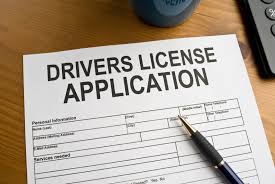You might have noticed that your Windows PC has slowed down or ground to a halt a few minutes over the time of it use, but it doesn’t have to be so. There might be several other reasons for the slowdown of your computer. Opt for computer reboot, if something’s not working. You can fix some of the issues of your PC by manually troubleshooting and following the below tips and tricks.
1. Identify Resource-Hungry Programs
Your computer might run slow due to the lack of resources, as 99% of your PC resources might have been allocated to a runaway process. For instance, an application might be getting a memory leak and utilizing the large amount of memory, resulting in your PC to swap to disc, while the other app might be using the lot of disk, making other apps slow down while they are required to load data from or save it to the disk.
To identify the Resource-Hungry Programs, Go to Task Manager Right-click on Taskbar and click Task Manager. Click the CPU, Memory and Disk Headers to check and sort the list of apps that are occupying most resources. If some of your apps are using more than needed resources, select it and click End Task to force it to close.
2. Close System Tray Programs
Few of the applications might be running in the System tray or the notification area, and such apps launch at startup, remain to run in the background and will be hidden hind the up arrow icon at the bottom-right corner of screen. For closing down such programs, Go to the up arrow icon near the system tray, right-click on the apps you don’t require and close them to free the resources to allocate to your other tasks.
3. Disable Start-up programs
It is better to prevent the applications from launching yet, to save memory and CPU cycles and to speed up the login process. Windows 8, 8.1, and 10 users can Go to Task Manager for a Startup Manager, and Manage your startup programs. You can also press Ctrl+Shift+Escape to launch Task Manager. Now, click on the Startup tab and disable startup applications which aren’t necessary. Windows will remind you the apps which can slow down your startup process.
4. Minimize the use of Animations
Windows can use animations, which can supposedly slow down your PC to an extent. If you disable the associated animations, Windows can minimize and maximize them instantly. For disabling animations, Right-click on the Start button; Go to System, Click Advanced System Settings on the left and go to Settings option under Performance. To disable all the animations, select “Adjust for best performance” under Visual Effects, or you can select Custom and disable the animations individually by unchecking the tickbox.
5. Web-browser Extensions
You might be using your web browser extensively, and this may be one of the reasons your PC to slow down. It’s better to use few Web Browser Extensions or Add-ons manager for completing the tasks faster. Enable click-to-play plug-ins, and preventing flash content from loading will avoid unnecessary Flash content from using CPU time.
6. Scan for Malware
Malicious software slows down your processes by running in the background. For instance, this may be some software that interferes with your web browsing to track the extra additional ads. For extra caution, scan your PC with antivirus program, and also scan it with Malwarebytes, which has the ability to catch a lot of “potentially unwanted programs” (PUPs) where most antivirus programs ignore.
7. Free-up Disk Space
If the hard drive of your PC is almost full, then it can become slower. Leave your system some space to work on your hard drive. Free up the space on Windows PC by just running the Disk Cleanup tool included in Windows.
8. Defragment Hard Disk
Modern versions of Windows not necessarily require the defragmentation of Windows, as it’ll automatically defragment mechanical hard drives in the background. But if you’ve the mechanical hard drive and have loaded lot of files on the drive, such files might need defragmentation as Windows hasn’t gotten around to defragmenting them yet. For doing the task, you need to initially open the disk defragmenter tool and perform a scan to check if it requires a manual defrag program.
9. Uninstall unnecessary programs
Uninstall the programs which you don’t use or required, by going to the Control Panel and clicking on Add/Uninstall Programs. Uninstalling the background processes, autostart entries, system services, context menu entries, and other things will speed up your PC. It will also free up space on hard drive and improve system security.
10. Reinstall Windows
If all the above tips fail to fix your PC issues, then opt for Reinstallation of Windows or Rebooting your PC. For Windows 8, 8.1, and 10 users, it’s easier to get a fresh Windows installation by simply using the “Reset your PC” feature built into Windows.
1. Identify Resource-Hungry Programs
Your computer might run slow due to the lack of resources, as 99% of your PC resources might have been allocated to a runaway process. For instance, an application might be getting a memory leak and utilizing the large amount of memory, resulting in your PC to swap to disc, while the other app might be using the lot of disk, making other apps slow down while they are required to load data from or save it to the disk.
To identify the Resource-Hungry Programs, Go to Task Manager Right-click on Taskbar and click Task Manager. Click the CPU, Memory and Disk Headers to check and sort the list of apps that are occupying most resources. If some of your apps are using more than needed resources, select it and click End Task to force it to close.
2. Close System Tray Programs
Few of the applications might be running in the System tray or the notification area, and such apps launch at startup, remain to run in the background and will be hidden hind the up arrow icon at the bottom-right corner of screen. For closing down such programs, Go to the up arrow icon near the system tray, right-click on the apps you don’t require and close them to free the resources to allocate to your other tasks.
3. Disable Start-up programs
It is better to prevent the applications from launching yet, to save memory and CPU cycles and to speed up the login process. Windows 8, 8.1, and 10 users can Go to Task Manager for a Startup Manager, and Manage your startup programs. You can also press Ctrl+Shift+Escape to launch Task Manager. Now, click on the Startup tab and disable startup applications which aren’t necessary. Windows will remind you the apps which can slow down your startup process.
4. Minimize the use of Animations
Windows can use animations, which can supposedly slow down your PC to an extent. If you disable the associated animations, Windows can minimize and maximize them instantly. For disabling animations, Right-click on the Start button; Go to System, Click Advanced System Settings on the left and go to Settings option under Performance. To disable all the animations, select “Adjust for best performance” under Visual Effects, or you can select Custom and disable the animations individually by unchecking the tickbox.
5. Web-browser Extensions
You might be using your web browser extensively, and this may be one of the reasons your PC to slow down. It’s better to use few Web Browser Extensions or Add-ons manager for completing the tasks faster. Enable click-to-play plug-ins, and preventing flash content from loading will avoid unnecessary Flash content from using CPU time.
6. Scan for Malware
Malicious software slows down your processes by running in the background. For instance, this may be some software that interferes with your web browsing to track the extra additional ads. For extra caution, scan your PC with antivirus program, and also scan it with Malwarebytes, which has the ability to catch a lot of “potentially unwanted programs” (PUPs) where most antivirus programs ignore.
7. Free-up Disk Space
If the hard drive of your PC is almost full, then it can become slower. Leave your system some space to work on your hard drive. Free up the space on Windows PC by just running the Disk Cleanup tool included in Windows.
8. Defragment Hard Disk
Modern versions of Windows not necessarily require the defragmentation of Windows, as it’ll automatically defragment mechanical hard drives in the background. But if you’ve the mechanical hard drive and have loaded lot of files on the drive, such files might need defragmentation as Windows hasn’t gotten around to defragmenting them yet. For doing the task, you need to initially open the disk defragmenter tool and perform a scan to check if it requires a manual defrag program.
9. Uninstall unnecessary programs
Uninstall the programs which you don’t use or required, by going to the Control Panel and clicking on Add/Uninstall Programs. Uninstalling the background processes, autostart entries, system services, context menu entries, and other things will speed up your PC. It will also free up space on hard drive and improve system security.
10. Reinstall Windows
If all the above tips fail to fix your PC issues, then opt for Reinstallation of Windows or Rebooting your PC. For Windows 8, 8.1, and 10 users, it’s easier to get a fresh Windows installation by simply using the “Reset your PC” feature built into Windows.












